The Rubin Museum of Art closed permanently in October 2024. I found this really disappointing, since I enjoyed the museum so much. Objects from the museum’s collection will travel and go on loan to other museums around the world. Visit the museum’s website for more information about current and upcoming exhibitions.
This past Saturday, I visited the Rubin Museum of Art in New York City. The Rubin is all about Himalayan art – works from Tibet, Nepal, India, China, and the surrounding areas. I had been to the Rubin at least once before, but not in the past few years. I visited as part of a private group tour, but I also got to explore a little on my own.
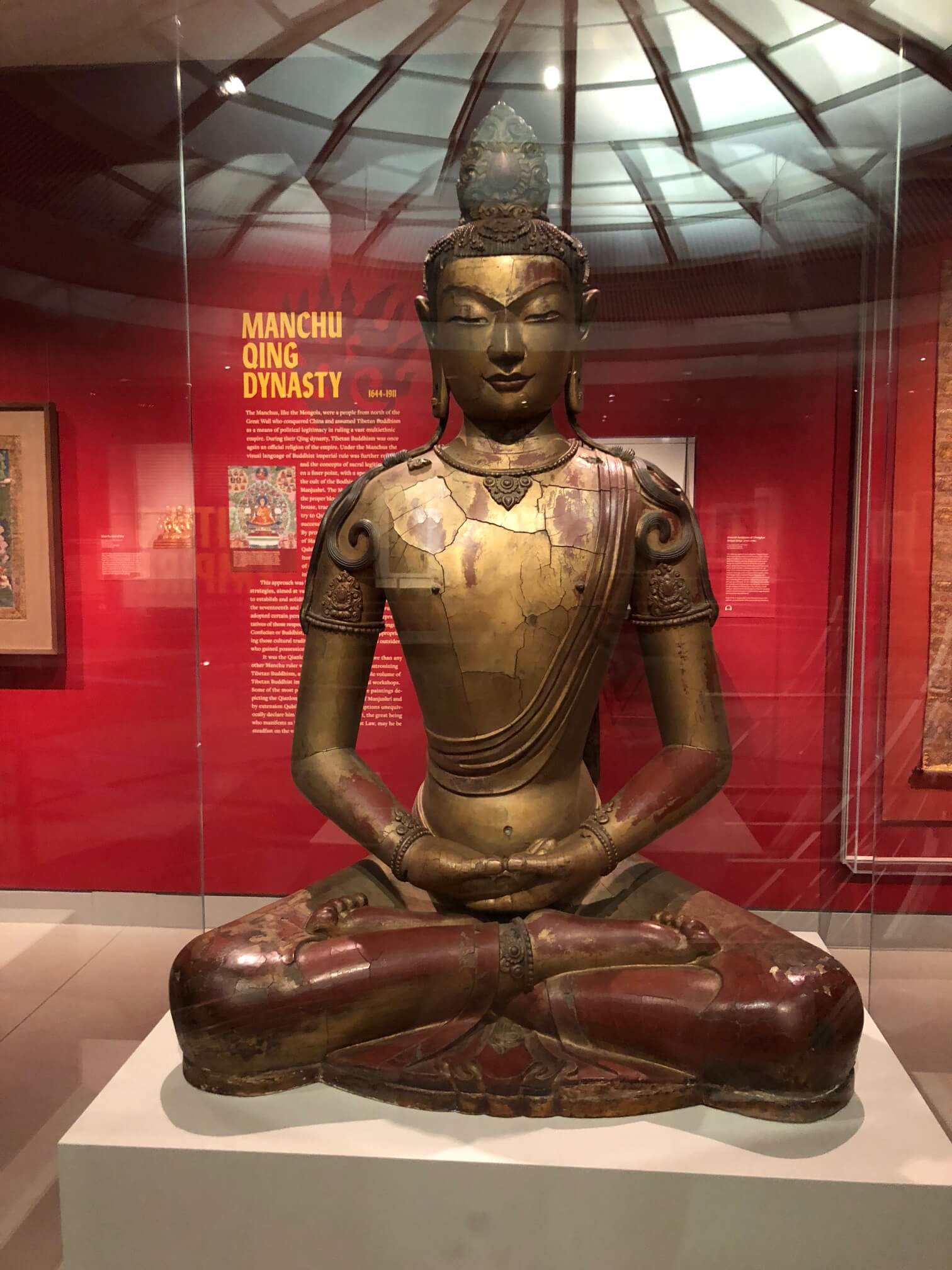
The art at the Rubin Museum is very different from what I’m most familiar with. It primarily relates to Buddhism; there’s very little secular art and only a bit of Hinduism. Almost everything ties back to the principles of Buddhism, so I definitely didn’t experience it with the same level of background knowledge and context that I’m used to. I took a class on Indian religions in college – that’s how I first became acquainted with this museum – but my knowledge is still slight in this department. I was glad to have a guide to explain things to me, because this is such a fascinating tradition with artwork rich in meaning.
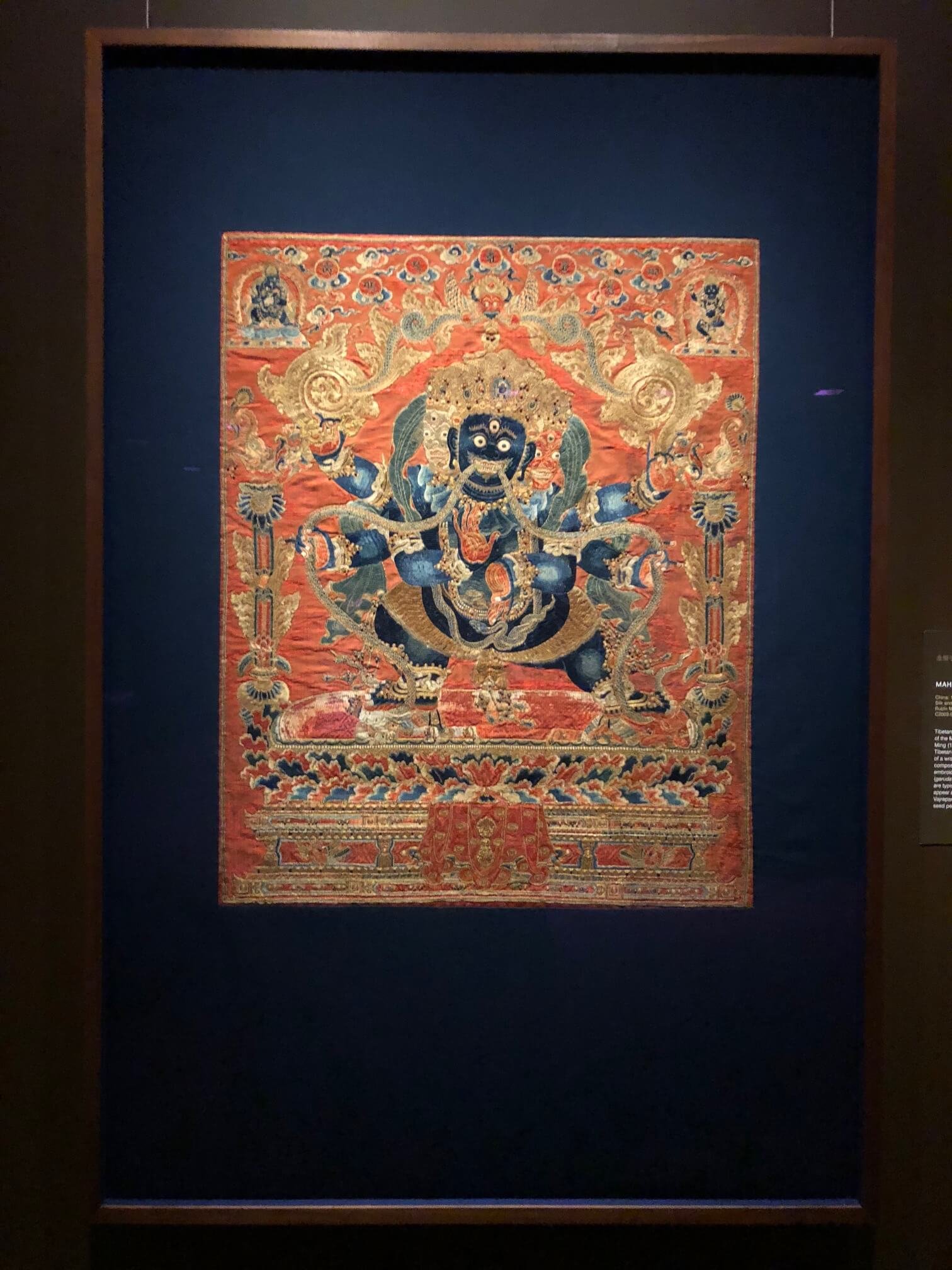
We spent a lot of time talking about beautiful and elaborate paintings and embroideries on silk. They are large and full of subtle symbolic detail. Eastern symbolism isn’t the sort that I’m most fluent in, so it was fun to hear the guide explain the significance of tiny features that I wouldn’t have paid attention to otherwise. Such paintings and embroideries were commissioned by wealthy patrons, and Buddhist monks created these artworks as part of their monastic duties. This is similar to how medieval manuscripts were made in Western monasteries, so I felt at home with this idea. We saw a map/painting of a Buddhist pilgrimage site in China, and there’s enough detail in that image to look for days.
We also saw sculptures. There are some pretty dramatic and impressive large-scale sculptures at the Rubin, but we spent more time with the smaller ones. Although I prefer to take pictures of the big stuff, the small sculptures are actually more interesting because of all their little symbolic details. For example, we saw a small statue of a figure holding a sword and a (tiny) bow in two of his many arms. It would be easy to assume that he is a deity of war and violence, but our guide explained that this is far from the case. The sword actually symbolizes cutting through ignorance, and the bow refers to swiftness of thought. This figure is the Bodhisattva (Buddhist enlightened being) of Wisdom. These are the kinds of really fascinating ideas to be discovered at this museum.
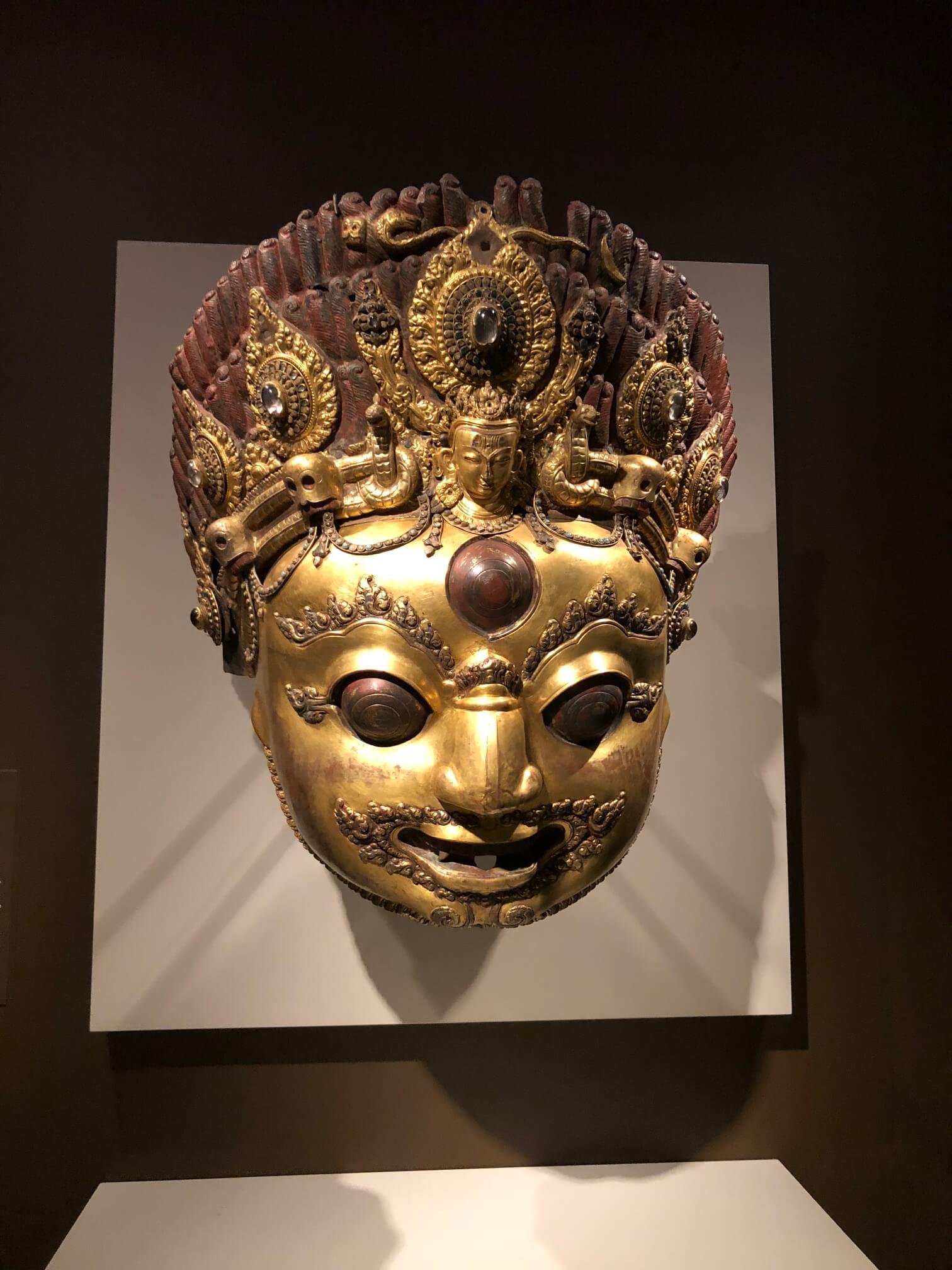
For me, the highlight of the tour was the Tibetan Buddhist Shrine Room. This is a whole room that recreates the kind of shrine a wealthy Tibetan Buddhist family would have at home. Our guide said it is something for only the wealthiest homeowners. Most people would have just a simple shrine instead. Visiting this shrine is a very cool experience. You get to look at all the many statues and altars, see flickering candles amongst all the colors and textures, hear recordings of monks chanting their mantras, and even hold a set of prayer beads. Our guide explained that Buddhist shrines are intended to engage six senses – experience is considered the sixth sense. There are no actual smells or tastes in the Rubin’s shrine, but we learned how they would be present, too. Sitting there for a while was an absorbing and somewhat spiritual experience, even for a non-Buddhist. (The Buddhist altar at the Newark Museum is also a cool experience but in a different way.)

After my tour, I got to explore an exhibition called “The Power of Intention: Reinventing the (Prayer) Wheel”, which is part of the Rubin’s 2019 theme of “Power”. Prayer wheels are used in Buddhism. People write their prayers and intentions on pieces of paper and put them inside a big, decorated cylinder called a prayer wheel. Then, they turn the wheel, and each rotation is supposed to activate those prayers and send them throughout the world. Some prayer wheels are hand-held, but others are massive. I saw a video of prayer wheels installed in an outdoor public space. People would just causally grab the handles and turn them as they walked past, perpetuating the cycle of prayer as they went about their business. I really love this idea! In this exhibition, I saw a few real prayer wheels and several works of contemporary art that engage with the ideas of intentions and prayer wheels. There are some pretty cool works here; many of them have to do with words on one level or another, often mixed with technology. Then, I got to participate in a prayer wheel myself.
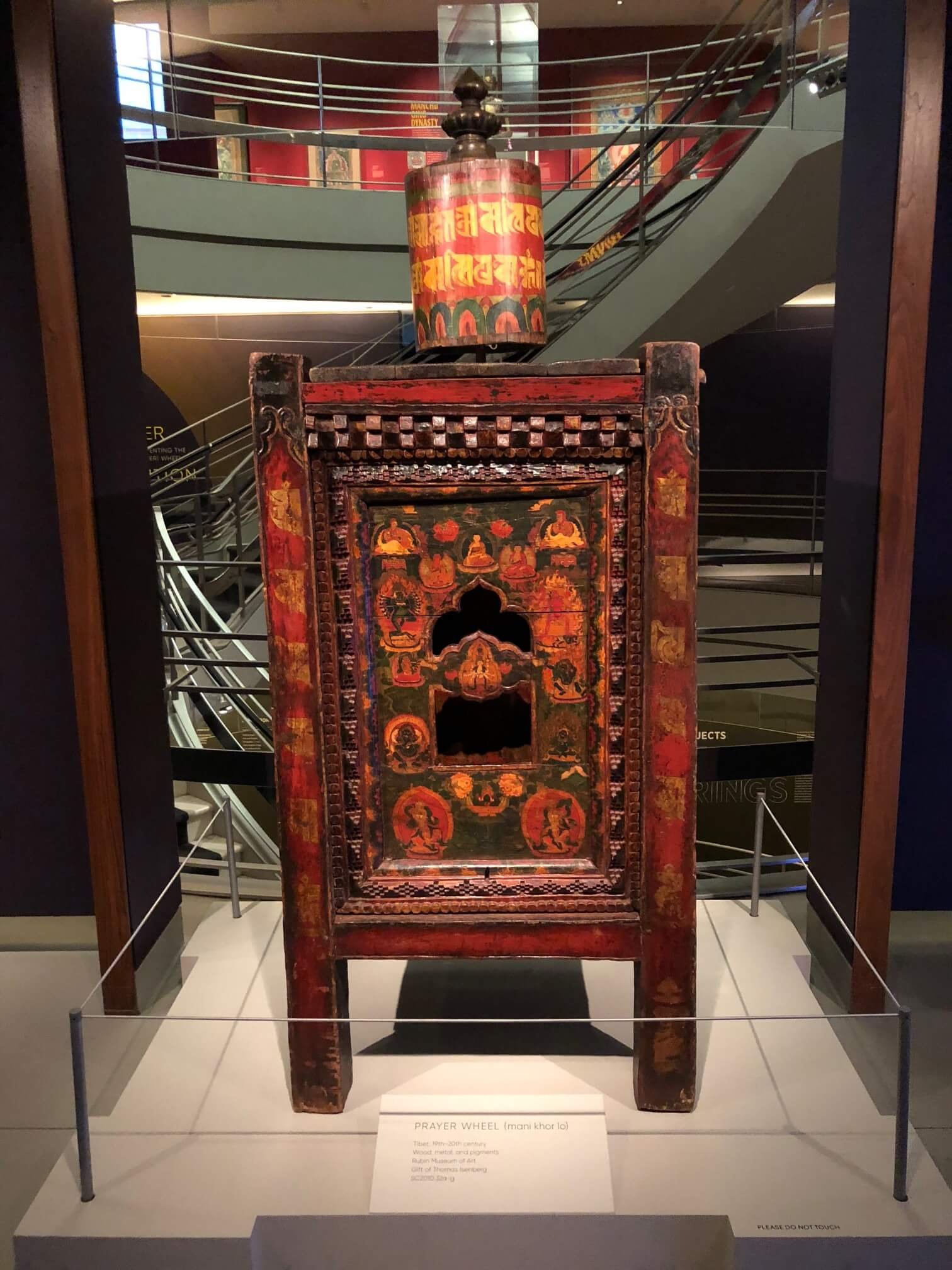
The Rubin Museum itself is basically a giant wheel. The building was originally a Barneys department store, and it has a large spiral staircase that goes up six floors. (But don’t worry if that’s an issue for you, because there’s also an elevator.) This exhibition takes advantage of the staircase by turning it into a massive prayer wheel. On the ground floor, I typed my intention onto a keyboard and then spun the wheel on the display. My intention was projected onto the underside of the stairs and slowly spiraled all the way up to the very top, where it joined all the other intentions on a big screen. It was cool to see other people’s intentions appearing on the screen while I was exploring the sixth-floor exhibitions. Some made me wonder who wrote them and what stories were behind them.
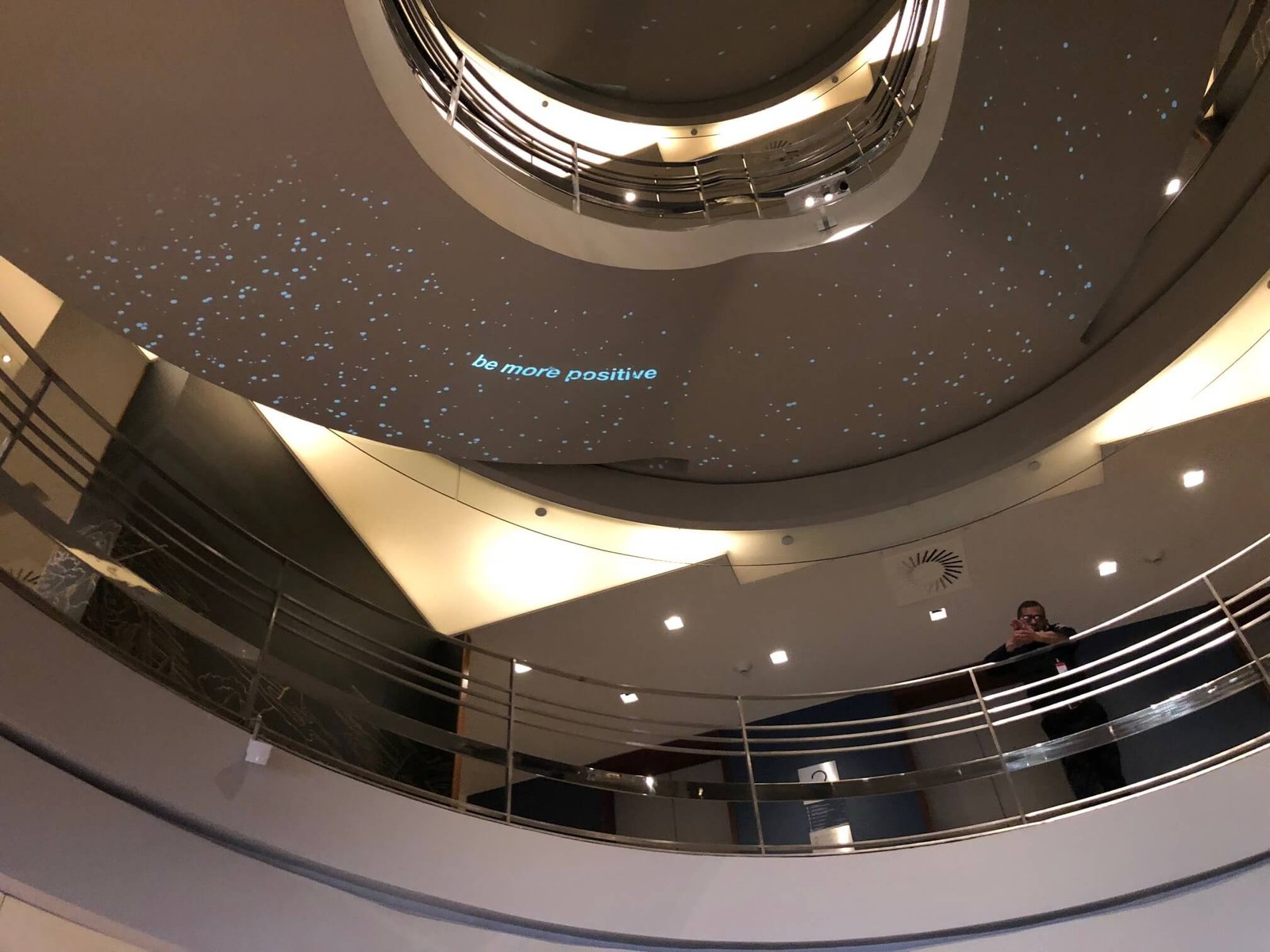
The Rubin Museum is a really unique and interesting place. It’s a different experience from most of the other museums I’ve reviewed here, and it’s definitely worth a visit. It isn’t particularly large in terms of gallery space or the number of objects on display, but there’s more than enough to see and learn. You’ll want lots of time to go through everything slowly, particularly if you’re not familiar with Himalayan or Buddhist art. This artwork rewards patience and close looking – much more than I was able to give on this visit, unfortunately. For the first-time visitor, start on the second floor, which is entitled “Gateway to Himalayan Art” and will introduce you to the main ideas, techniques, and more. Reading the wall texts is really critical to understanding the intricacies of what you’re seeing. General tours are offered twice per day (1pm & 3pm), and I would recommend joining one if possible.

